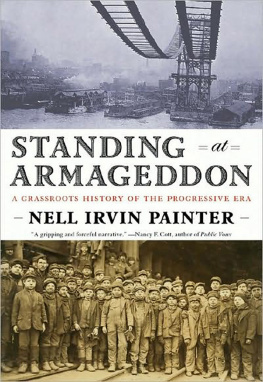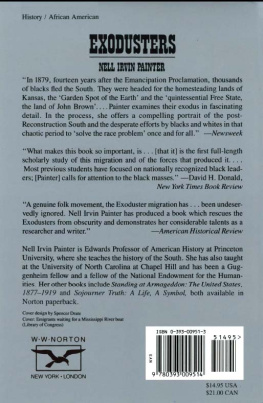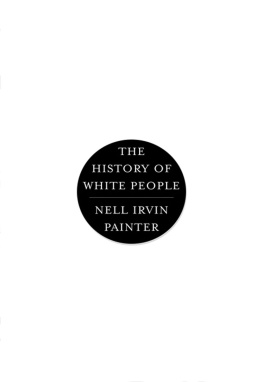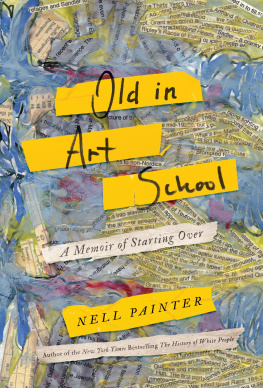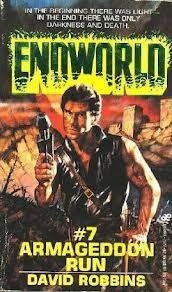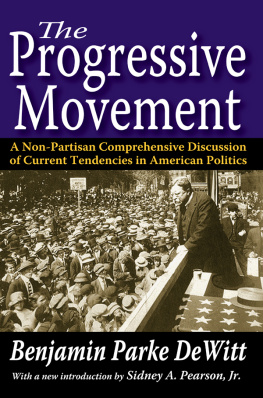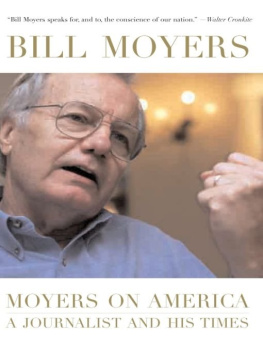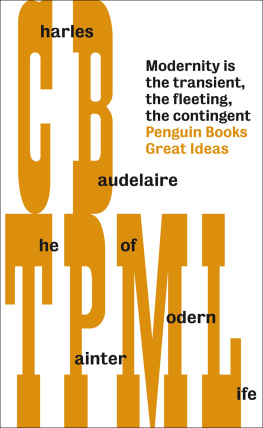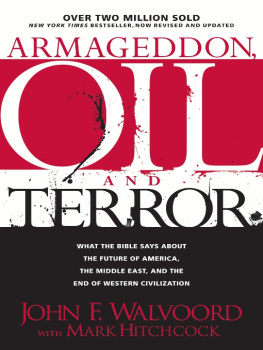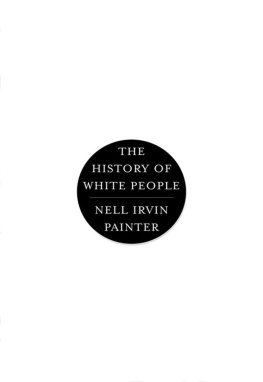Creating Black Americans: African-American History and Its Meanings, 1619 to the Present
STANDING AT ARMAGEDDON
THE UNITED STATES
1877 1919
Nell Irvin Painter

Copyright 2008, 1987 by Nell Irvin Painter
All rights reserved
First published as a Norton paperback 1989; reissued 2008.
For information about permission to reproduce
selections from this book, write to Permissions,
W. W. Norton & Company, Inc.,
500 Fifth Avenue, New York, NY 10110
Library of Congress Cataloging-in-Publication Data
Painter, Nell Irvin.
Standing at Armageddon.
Includes bibliographies
1. United States-History-1865-1921.
2. United States-Social conditions-1865-1919. I. Title.
E661.P33 1987 973.8 86-33111
ISBN 978-0-393-33192-9
W. W. Norton & Company, Inc.
500 Fifth Avenue, New York, N.Y. 10110
www.wwnorton.com
W.W. Norton & Company Ltd.
Castle House, 75/76 Wells Street, London W1T 3QT
FOR FRANK AND MADELINE FREIDEL
Contents
Preface to the 2008 Edition
SO MANY strange names and terms! Nineteenth-century history can seem so foreign: the Knights of Labor, Henry George, the graduated income tax, the Peoples Party, the protective tariff. But when you take a second lookwhen you grasp the symbolic meaning behind the wordsyou see that unfamiliar names attach to familiar concerns. In our present-day return to the Gilded Age, we realize the issues of the late nineteenth and early twentieth centuries never really died. The old issues, in fact, are with us still. As Henry George said way back in 1879, the unequal distribution of wealth is the curse of our times.
More than a century ago, thoughtful Americans pondered the meaning of wealth generated by a modern economy. They asked how it could be that the people who worked the hardest were the poorest, but the people who seemed not to work at all rolled in dough. How could it be that political power served the people with the most but did so little for the people with the least? What iswhat should bethe relation between the power of money and the power of the people?
In the last generation, Americans (among other people) have faced old and new crises. An energy crisis remains with us as we grapple with global warming. We now call hard times recessions, but their toll in human suffering remains. We used to be able to grow out of every crisis at home and send in friendly GIs to help out the people overseas, but wars in Vietnam, Afghanistan, and Iraq have divided the American people without producing the victorious finale of the good war of the 1940s. Today, as when the war in question was the Philippine insurrection, Americans argue over the wisdom of trying to improve another country by occupying it. William Jennings Bryans question from 1899 bears repeating: Is the United States a democracy or an empire?
Wars are with us still, and their costs in money and blood remain staggering. As Americans asked in 1917, they wonder now: Who should pay and how? Who should serve in the battlefield? Who are the enemy at home and abroad? These pressing issues of the First World War remain pressing issues today. The enemies, though, have changed, and the threat of terrorism seems to be everywhere. We no longer trade in red scares, because the Soviet Union no longer exists and the Cold War is over. But we still question the trade-offs between freedom and security. Is the loss of American freedom the cost of vigilance, and who decides who will pay?
At the end of the First World War and in the midst of the Great Unrest, a Chicago journal predicted that unless the issue is decided once and for all now, through the firmness and courage of the American people, Americanism for a time at least will perish from the face of the earth and the war will have been fought in vain. Whether the challenge is economic hard times, religious antagonism, or the gap between the rich and the poor, this warning from nearly a century ago still rings in our ears.
Acknowledgments
A BOOK that has taken as long as this one piles up a lot of obligations that are a pleasure to acknowledge. The John Simon Guggenheim Foundation inadvertently supported some of the work on this book, a great help even so. Among scholars who have read parts of the manuscript and friends who have provided the moral support that is just as important are the late George Mowry, Arthur Link, William Harbaugh, Gil Joseph, Steve Channing, Armstead Robinson, Walter T. K. Nugent, Richard L. McCormick, Eric Foner, Leo Marx, Alan Trachtenberg, Marianne Debouzy, Nellie McKay, Thadious Davis, Nancy Clapp-Channing, Alden Whitman, Charles Phillips, Maura ODonoghue, George Meyer, Randall Kenan, Wesley Brown, and, as ever, Frank and Dona Irvin. William Barney, Leon Litwack, and Sydney Nathans read entire drafts and made useful comments; Syd read even more and brought pumpkin bread as well. Derrick Bell, Ellen DuBois, Leonard Wallock, Kathryn Kish Sklar, David Montgomery, Nancy Schrom Dye, William Cooper, Michael Frisch, Nancy Cott, Leon Fink, Joyce Seltzer, John Semonche, Peter Filene, James Stewart, the Social History Project of the Graduate Center of the City University of New York, Thomas Browne, Michael Katz, and Andrew Gyory shared valuable information. I am especially grateful to Jerry Nowell and Tom Buske, two University of North Carolina at Chapel Hill students, who provided generous, voluntary research assistance during the summer of 1982. I leaned heavily on the staff of Wilson Library at the University of North Carolina, particularly on the microfilm staff headed by Robert France. In Chapel Hill, Rosalie Radcliffe, Julie Perry, and Patricia Reefe typed the manuscript. During the final revision I accumulated an enormous debt to the people at the unusually supportive Russell Sage Foundation in New York, led by Marshall Robinson and Peter de Janosi; I owe many thanks there, notably to librarian Pauline Rothstein; Madge Spitaleri, who changed my life by teaching me how to use a word processor; and my assistant, who wishes to remain unnamed. Very special thanks go to my friend and fellow traveler Mary Kelley and a real mensch of an editor, Robert Kehoe.
N. I. P.
New York City
June 1986
Introduction
LATE - NINETEENTH - CENTURY American speakers and essayists rarely resisted the impulse to list figures with many zeros. Almost any argumentthe impossibility of raising wages in the railroad industry in the 1870s, the need to reduce agricultural production in the 1880s, the desirability of remonetizing silver in the 1890sserved as a pretext for demonstrating how American production had soared. These astronomical measures of output functioned practically as a talisman, to be touched and paraded whenever possible: In 1889 the United States produced 1,705,000 tons of rails; in 1900, 2,672,000 tons. In 1889 factories, mines, and railroads used 23,679,000 horsepower; in 1900, 37,729,000, not counting the use of the popular new electric motors. Between 1889 and 1900 the production of raw steel doubled, from 5,865,000 tons to 11,227,000 tons. Total manufacturing capital soared from $5,697,000,000,000 in 1889 to $8,663,000,000,000 in 1900.

